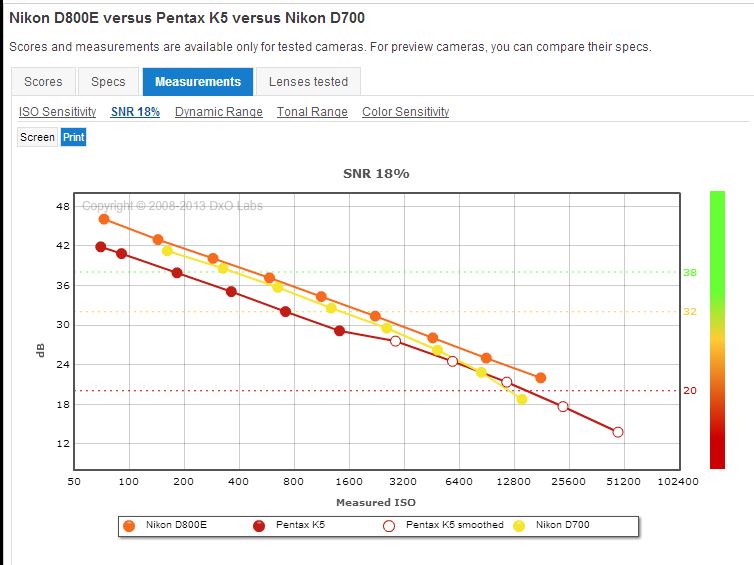 Originally posted by jsherman999
Originally posted by jsherman999 
'Stop' doesn't just refer to exposure, though. The vernacular includes other usage like "One stop DOF," or "one stop noise." Even if you don't like that usage, you should know what it's referring to: the effect on those things that changing f-stop causes.
.
Sorry again: The OP started all this mayhem with the argument about light gathering and about "equivalent f/stop" in terms of exposure. Do not come now arguing its all about SNR, or DoF.
SNR (Signal to Noise Ratio) is something measurable to itself, but not comparable between formats. Simply because SNR numbers change with time as soon as manufacturers come with new sensors. With Northrup's (the OP's and your) argument, then my *istD with APSC sensor size,k should have a much better SNR (less noise) than my new MX-1 compact, with a 1/1.7" sensor. But guess what: It doesn't. The *istD simply sucks in SNR compared to the MX-1. Wanna know the reason? Its 12 years difference in technology development! Not the sensor size!
OTOH, f/stops will remain the same with the pass of time. f/2.8 today is the same f2.8 of 75 years ago. Wanna know why? Because its a math formula that doesn't change. It is based on hard facts as focal length and internal lens diameter. It makes no difference if the lens is top quality recently designed all super lo ED IF CD CD AP (pick your choice of letters.... makes no difference) or a cheapo Focal (brand) lens from Kmart from 40 years ago... It makes no difference if the lens is for a 35 mm or a MF or a 1/2 frame or a Pentax auto 110 SLR... f/stop is the same and the measured light DOES NOT CONSIDER NEGATIVE (SENSOR) SIZE, because its irrelevant for EXPOSURE PURPOSES.
If its SNR (noise) you want to discuss, then base your discussion on what's relevant for this particular matter, which is a comparison between sensors and manufacturers at a specific time frame in history, and of course, to make comparisons valid, you will have to compare apples with apples. That is, compare sensors OF THE SAME SIZE where the only difference, would be the sensor brand, thus, its sole performance. Keep the rest under identical conditions. Otherwise any comparison is not valid.
 Originally posted by jsherman999
Originally posted by jsherman999 
'In learning any second language, you need to start with a translation mechanism - a way to map meanings.
Car = Coche.
Equivalence simply provides this translation mechanism for learning your photographic second language 
And indeed after you learn it it's second nature... until you have to fire up the translation mechanism again to learn a third language (1'' sensor?)

.
My God ! Better do your homework again. Your example is as good as a "clay block house during earthquake season..." Let me explain:
Car has certain meaning, but such meaning will change according to whoever is asked about
CAR, Some may think about their dream
car, others about their own
car, about their
car at the mechanic, about the
car they want to buy, etc. Better yet, someone that works in the train business may think of CAR as in "Pullman
Car", "Sleeping
car" or "Lounge
car" in a passenger train...
On the other side, "
coche" has far more meanings than you can imagine. It can be a
car of course, but as said before, such
car could be totally different from one person to another. But
coche can also mean
"horse carriage", "
baby stroller", "
supermarket cart" and probably other meanings....
But I have to give it to you, because your mistake in this example lets me stand on what I said before; about photography being like learning a language. If you keep translating... you will never get it right. Just understand it and do not attempt to figure out what's the meaning of anything under the old language. Of course, if you live, play and work with both languages, of course you should do so correctly with both, but not by "translating" between them.
In fact, I believe there's a movie whose title describes exactly what I've been trying to say
"Lost in Translation" 

 Similar Threads
Similar Threads 














 Post #4 by Dartmoor Dave
Post #4 by Dartmoor Dave








